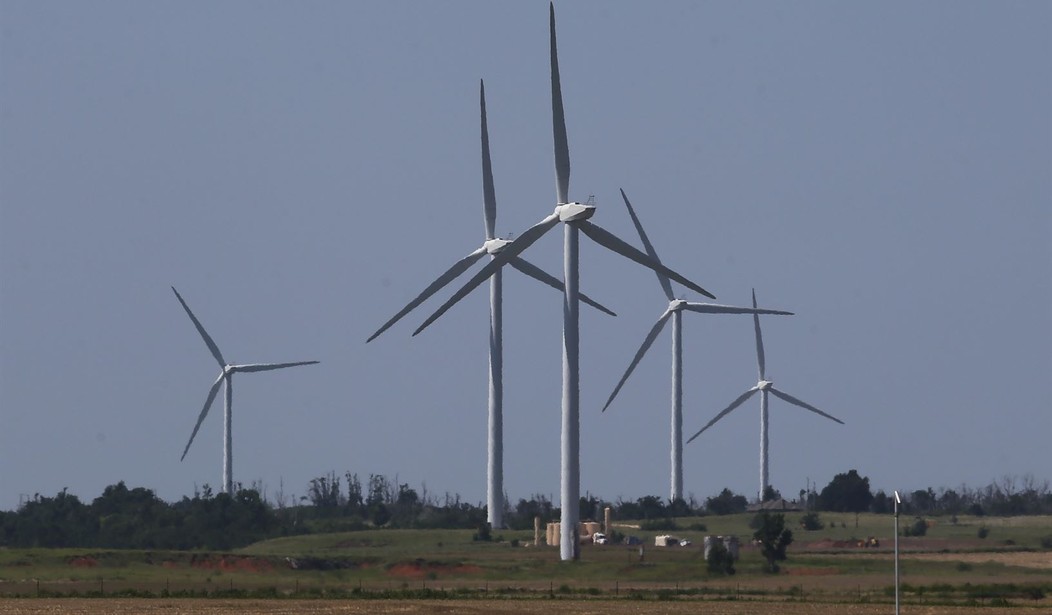A recent report from Bloomberg on the current state of wind turbine technology would almost be funny if it weren’t so potentially dangerous. They relate the story of a wind turbine tower located 90 miles to the northwest of Oklahoma City that came down in June of last year. The tower, which stood as tall as the Statue of Liberty (when you include the height of the blades), didn’t simply “fall over.” It collapsed in upon itself, scattering broken segments of its blades across a field of crops. The tower had been standing for less than a year. The cleanup and replacement of the tower was anticipated to be a massive, expensive project.
As Tim Newcomb reported at MSN the same day, the collapse in Oklahoma wasn’t unique. There have been similar collapses or topplings of wind towers in Colorado, Sweden, and Germany, among others. Towers built by all three of the major manufacturers have been failing, and the wreckage can be both impressive and destructive. Reportedly, the industry is in a race to build ever taller towers with larger blades, but quality control plans are not keeping up with the increasingly large designs.
Multiple turbines that are taller than 750 feet are collapsing across the world, with the tallest—784 feet in stature—falling in Germany in September 2021. To put it in perspective, those turbines are taller than both the Space Needle in Seattle and the Washington Monument in Washington, D.C. Even smaller turbines that recently took a tumble in Oklahoma, Wisconsin, Wales, and Colorado were about the height of the Statue of Liberty.
Turbines are falling for the three largest players in the industry: General Electric, Vestas, and Siemens Gamesa. Why? “It takes time to stabilize production and quality on these new products,” Larry Culp, GE CEO, said last October on an earning call, according to Bloomberg. “Rapid innovation strains manufacturing and the broader supply chain.”
Discussions of how “rapid innovation strains manufacturing” and “shortfalls in quality control” are simply nicer ways of saying that they are rushing forward without suitable safety and reliability testing. The towers have grown to heights that far exceed earlier designs in the span of a few years. Obviously, the stresses being experienced by the towers is greater than some of them can withstand, particularly during high wind events. (Which is kind of ironic.)
This is only the latest in a series of shortcomings being exposed in the wind energy field. It’s not just that the wind fails to blow sometimes, rendering the towers useless. There have been systemic engineering failures of other sorts observed following the rush to put up as many towers as possible in the shortest amount of time. (Ensuring that the companies can continue to collect the government subsidies which are the only thing allowing them to appear profitable.)
Nearly two years ago, in February of 2021, many parts of Texas lost power during a winter storm. But it wasn’t just because of tree limbs falling on power lines. Most of the wind turbines in the state simply froze up and stopped producing power. They were not winterized in anticipation of the infrequent but still inevitable heavy winter storms that sometimes paralyze the Lone Star State.
All of this green energy construction includes increasing numbers of offshore wind farms that are going up, particularly in the northeast. (Probably killing a lot of whales in the process.) Those towers are also massively tall, and they have to deal with storm surges and massive waves along with occasional hurricane-force winds. On the plus side, if they start falling down, they’re less likely to injure anyone unless there’s a very unlucky fisherman in the vicinity. But repairing or replacing them if they collapse will be far more logistically challenging than putting up a new tower in a cornfield.
Under ideal conditions, wind farms can be a useful addition to an “all of the above” energy strategy. But the weather is fickle and conditions are frequently far from “ideal.” When you add in all of the eagles and sea creatures that get wiped out during both construction and operational phases of these facilities, it seems to be something of a tradeoff at best.









